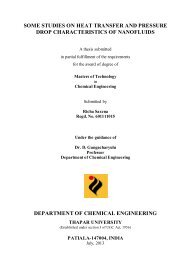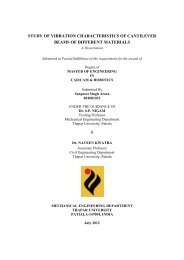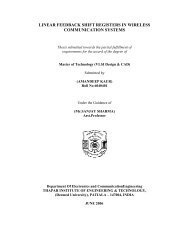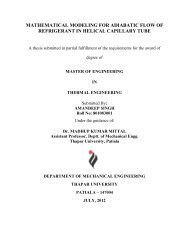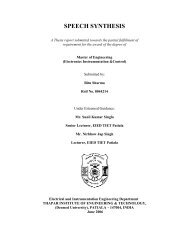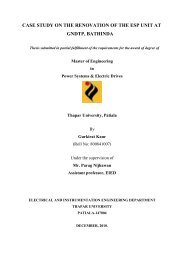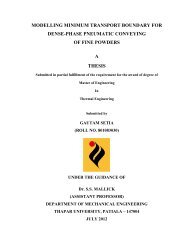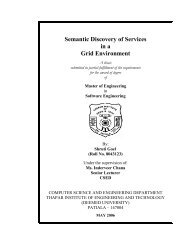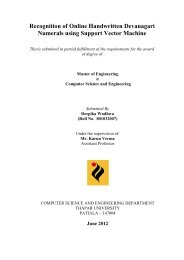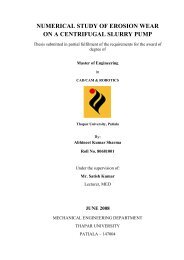from indigenous fermented foods and human gut ... - Thapar University
from indigenous fermented foods and human gut ... - Thapar University
from indigenous fermented foods and human gut ... - Thapar University
You also want an ePaper? Increase the reach of your titles
YUMPU automatically turns print PDFs into web optimized ePapers that Google loves.
Chapter II Review of Literature<br />
aldolase <strong>and</strong> phosphoketolase <strong>and</strong> therefore, not only ferment hexose but also pentoses (<strong>and</strong><br />
often gluconate).<br />
Group C: Obligatory heterofermentavie lactobacilli: the phospogluconate pathway<br />
ferments hexoses, yielding lactate, acetic acid (ethanol) <strong>and</strong> CO2 in equimolar amounts.<br />
Pentose enters in this pathway <strong>and</strong> may be <strong>fermented</strong>.<br />
Within these three groups the species are arranged according to their phylogenetic<br />
relationship. Thus, the combination of the letter “Aa” defines a species belonging to the<br />
obligatory homofermentative lactobacilli affiliated in the L. delbrueckii group, whereas “Cb”<br />
means that the species is obligatory heterofermentative phylogenetically belonging to the L.<br />
casei-Pediococcus group.<br />
L. casei species belonging to the group facultatively heterofermentative organism<br />
comes under group B. Two species, L. acetotolerans <strong>and</strong> L. hamsteri constitute group “Ba”,<br />
means that phylogenetically these organisms fall into the L. delbrueckii group. The presence<br />
of the Lys-Dasp type peptidoglycan is consistent with this grouping.<br />
Group “Bb" contains 15 species, 12 of which contain Lys-Dasp <strong>and</strong> three DAP in<br />
their peptidoglycan. In contrast to K<strong>and</strong>ler <strong>and</strong> Weiss (1986), Hammes <strong>and</strong> Vogel (1995)<br />
have included into group Bb L. bifermentans since, in agreement with the group definition;<br />
this organism possesses key enzymes, aldolase <strong>and</strong> phosphoketolase. L. bifermentans is<br />
characterized by fermenting glucose homofermentatively. However, dependent on the pH,<br />
lactate can be metabolized to ethanol, acetic acid <strong>and</strong> CO2 <strong>and</strong> H2. The utilization of lactate<br />
(<strong>and</strong>/or pyruvate) is rather common for group Bb-organisms.<br />
2.2.3 Description of the species<br />
All cells are Gram-positive <strong>and</strong> non-spore-forming, usually catalase-negative, non-<br />
motile, <strong>and</strong> facultatively anaerobic unless otherwise stated. The grouping of the species<br />
17



